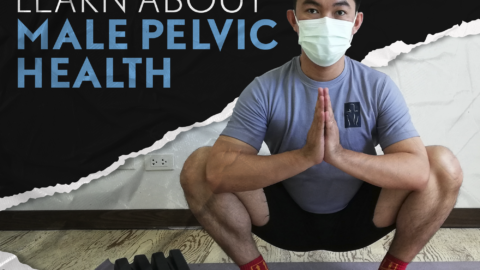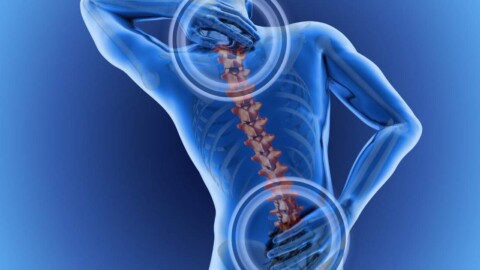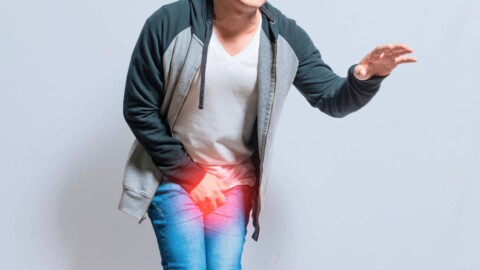Written by Kevin Viloria
It is a common response that we want to avoid pain as much as possible. It’s almost like a reflex when we touch a hot surface and immediately withdraw our hands due to an unpleasant and painful sensation. This is a good protective response for our body.
However, what if too much of this response can actually persist and be a barrier to recovery? For people who have injuries, sometimes we tend to baby the pain, we don’t want to move our shoulder or knee or back because we try to protect it from pain. This behavior, known as the fear avoidance behavior model, is understandable because it’s painful when we move the injured body part. This is usually okay for the acute phase of injury, but this response may not be helpful in the long run, and may actually slow down your recovery from the injury or pain.
What is Fear Avoidance?
Pain can sometimes become associated with fear-avoidance behavior, which is the belief that anticipation of threats such as increased pain is misinterpreted. Individuals who exhibit fear avoidance behaviors exaggerate the sensation of pain in a catastrophizing manner. It has been recognized that this thought can be problematic as it leads to avoidance of movement due to fear. The emotional frustration often can also amplify the experience of pain leading to the individual prolonging their condition to a chronic phase.
Complications of Fear Avoidance Behaviour
Weaning from activity due to fear of pain can have a detrimental impact on the muscular structures of our body. Disuse also referred to as muscle atrophy is a common complication. When muscles do not have sufficient contractile activity, they can have the tendency to decrease or shrink in size and strength.
Aside from physical complications, psychological complications may arise too. Because avoidance occurs in fear of pain rather than a response to actual painful stimuli, they have a higher chance of persisting rather than trying to correct the behavior. Several studies have also linked fear avoidance to decreased pain tolerance. This is related to increased anticipation of pain, making people experiencing fear avoidance unable to shift their attention away from pain-related information.
There are 2 Pathways of Injury

As illustrated above, fear avoidance is clearly outlined as a vicious cycle wherein pain experience can be prolonged due to fear and hypervigilance leading to physical and psychological complications. Pathway to recovery, in contrast, is pointing towards confrontation of fear. It has been studied that this pathway is associated with faster recovery, pain resilience, and optimism.
Does Physical Therapy Help with Fear Avoidance Behaviour?
Here at Prohealth Sports and Spinal we believe in a personalized and patient-centered approach to delivering physical therapy. We can give you the reassurance that you need and give you the right treatment that is appropriate to your personal circumstances.
We understand and respect that your personal experience of pain is valid so our treatment will give you a gradual exposure to activities until you can confidently get back to the activities you used to love without limitations of fear. We would be happy to assist and guide you every step of the way to your recovery.
Need Help? Contact Our Physiotherapists Today
At Prohealth Sports & Spinal Physiotherapy Centres our physical therapists are professional and experienced in working with clients with musculoskeletal conditions, including chronic pain. Our treatment plans are always personalised for each individual to each their maximum recovery potential.
If you would like an assessment, contact us!
Contact Details
Telephone: +632 8 633 6410 or +632 5 304 7971
WhatsApp: 956 914 8260
Email: appt@sportsandspinal.ph

Written by: Kevin Viloria
Kevin is a registered physiotherapist and registered midwife with over 5 years of experience. He has expertise in various areas of physiotherapy, including musculoskeletal conditions, manual therapy, and post-operative rehabilitation.
Kevin takes a personalized, multi-modal approach to treatment and is passionate about the correlation between physical and mental well-being. He strives to make a difference in his clients’ quality of life and function.
References
Gatchel R, Neblett R, Kishino N, et al. Fear-Avoidance Beliefs and Chronic Pain. J Orthop Sports Phys Ther 2016;46(2):38-43. doi:10.2519/jospt.2016.0601
Valaeyen J, Linton S. Fear-avoidance and its consequences in chronic musculoskeletal pain: a state of the art. Pain 85(3):p 317-332, April 2000. DOI: 10.1016/S0304-3959(99)00242-0
Durban N. Fear Not: A Physical Therapist Can Help You Overcome the Fear of Movement. https://www.choosept.com/health-tips/fear-not-physical-therapists-can-help-you-overcome-fear-movement. Published: August 23, 2022. Accessed October 21, 2023.
Sawchuk T, Mayer E. Fear-Avoidance Model Anaesthesia and Intensive Care Medicine, 2016.








